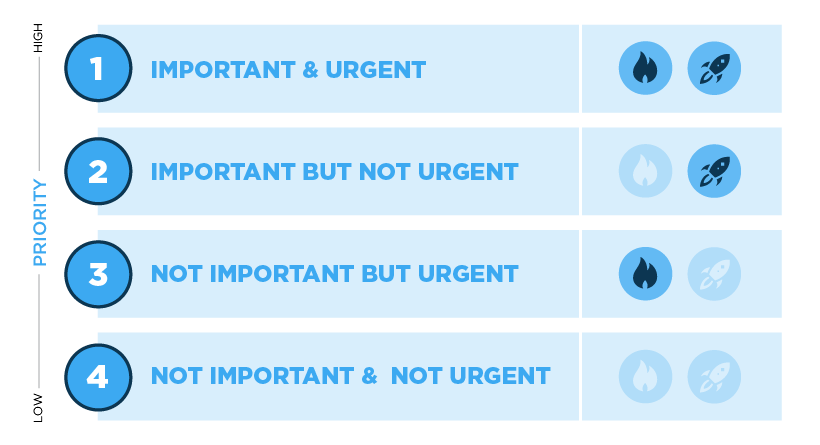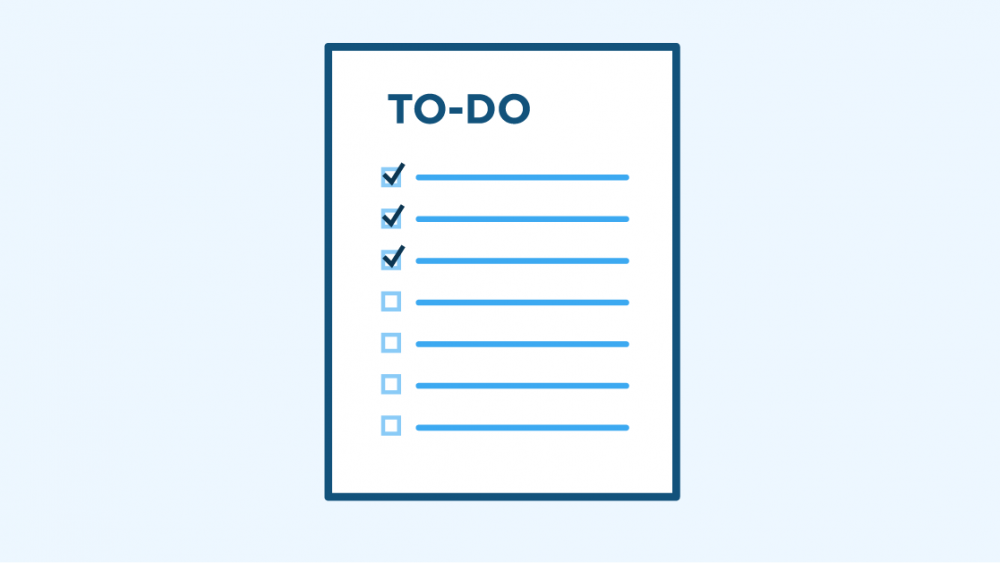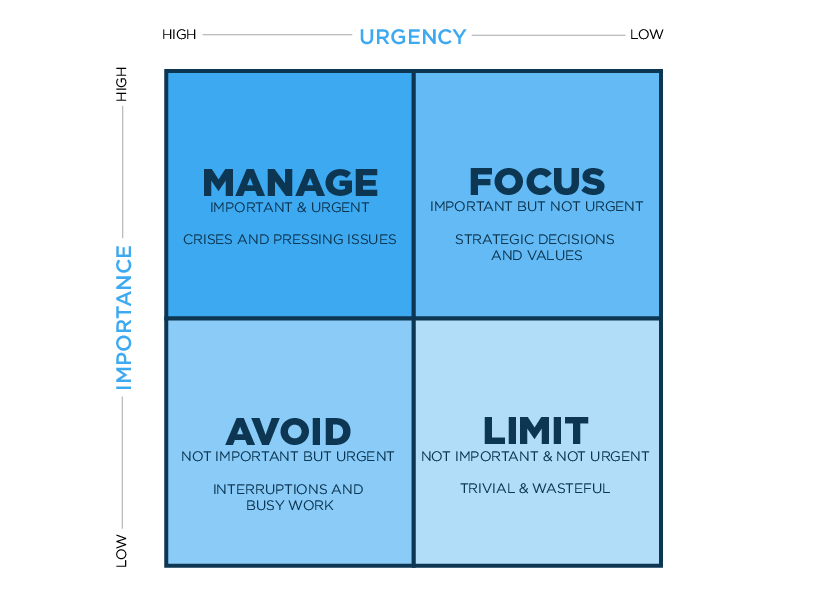In the book EntreLeadership Dave Ramsey discusses making the most of time management and organization.
Have you ever had day when you get home and you are exhausted, but when look back at the day not really sure what you did? Working without any progress towards your goals drains you. However, when you are efficient and making progress towards your goals your feel energized.
“My friend John Maxwell says a budget (for your money) is telling your money where to go instead of wondering where it went. Managing time is the same; you will either tell your day what to do or you will wonder where it went” – Dave Ramsey
One way Ramsey says you can be more efficient is to distinguish between important and urgent. Often referred to as or Stephen Covey Time Management Matrix or the Eisenhower Decision Matrix, four quadrants can be created when you place importance and urgency on separate axis.
Important and Urgent
Quadrant one tasks are both urgent and important. This one is pretty easy, they are tasks that require immediate attention and also work to accomplish our goals and missions.
Generally there are two types of tasks that fall in quadrant one: tasks that were unexpected or ones that have become urgent due to timing.
Important But Not Urgent
Quadrant two tasks are important but not urgent. This along with quadrant three are the most difficult. These tasks that work to accomplish our goals and missions but are not pressing.
These items have the biggest impact on your life. Some examples Ramsey lists are: strategic planning, exercise, goal setting, learning new things, spending time with family, and so on. All of these things could wait till tomorrow, but looking back are some of the most rewarding things. If neglected long enough they move to quadrant one.
Set aside plenty of time to work on these things and commit to quality so they do not become urgent. You may also want to set aside extra time to deal with unforeseen issues.
Not Important but Urgent
Quadrant three tasks are not important but are urgent. These item are very difficult to deal with as the urgency makes them appear important, but is mostly a waste of time.
These items can greatly influence your productivity. How many times have you stopped what you are doing to respond to an email? Over time what is important may change, things that were once important may become less important, or you may decide they are still important but not important for you to do.
Minimize time and effort spent and this quadrant and consider delegating when applicable.
Not Important and Not Urgent
Quadrant four is also pretty easy, things that are not important and not urgent. These things are generally entertainment or relaxation.
Despite being obvious, it’s very easy to unintentional fall into this category. From time to time we all have passive unproductive moments.
How to Use the Matrix
Think about what you spend your time on throughout the day or use to to-do-list and place each item into one of the four quadrants. Working on quadrant one first, the quadrant two, and so on.

Knowing when something is quadrant one and quadrant four is easy. However, differentiating quadrant two and quadrant three can be tricky, but getting it right can make you more efficient and energized throughout the day.




Comments are closed.